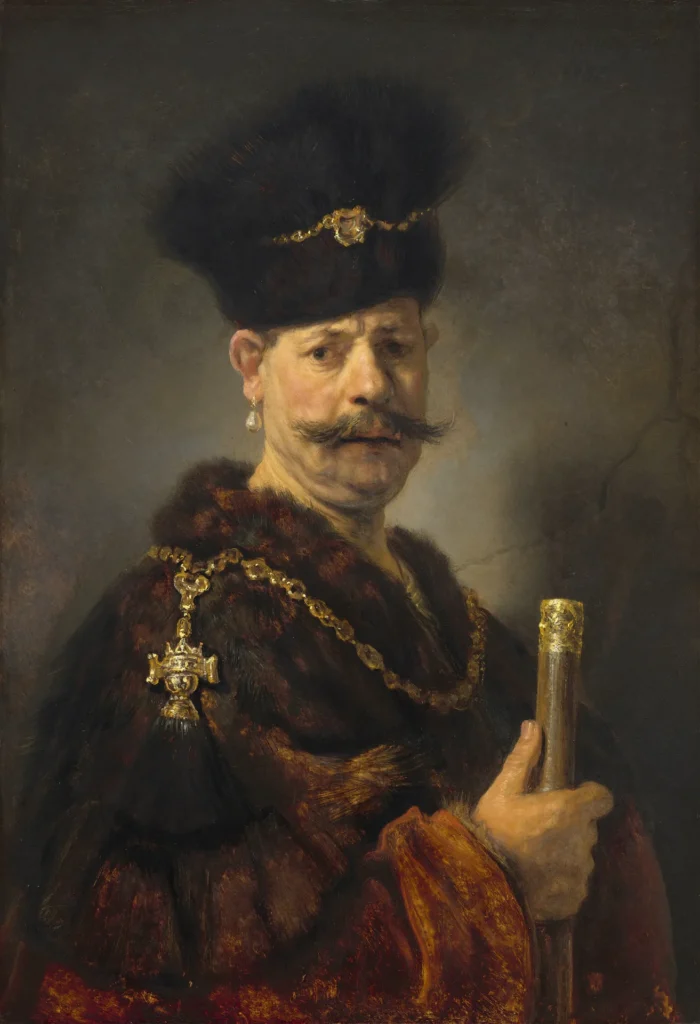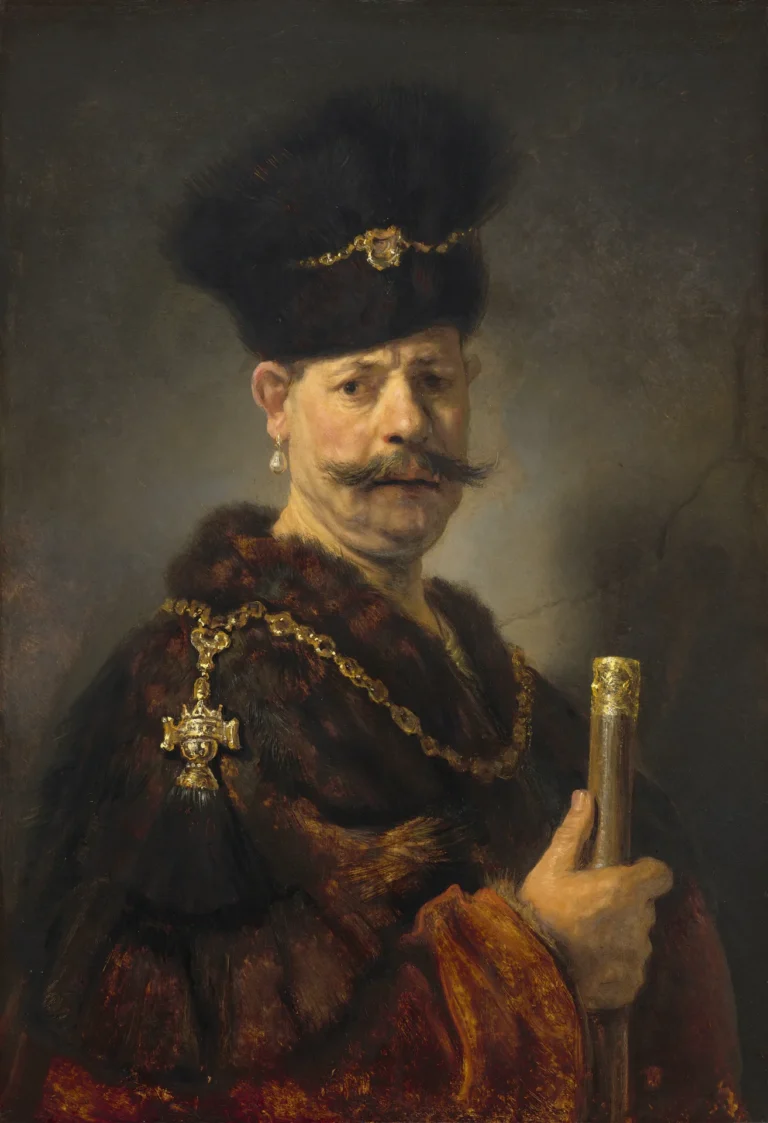A Polish Nobleman
A Polish Nobleman is a striking painting by Rembrandt van Rijn, created in 1637. The work presents an enigmatic figure adorned in the lavish attire of Polish nobility, with no definitive identity established for the subject. The artist's masterful technique shines through in the rich textures and deep tonal contrasts, bestowing an air of gravitas upon the nobleman. The exquisite details of his costume and accessories, coupled with an intense gaze, speak to the status and complexity of 17th-century European aristocracy. This masterpiece currently resides at the National Gallery of Art in Washington, D.C., where its historical and artistic value is celebrated.
1637
About the Artwork
Rembrandt's A Polish Nobleman is a captivating exploration of identity, nobility, and artistic genius. Painted in 1637 during the artist’s prolific period, the artwork captures the mysterious essence of the Polish nobility, complete with lavish costumes. The man’s apparel—a fur cap adorned with jewels, a rich mantle, and a heavy jewelry chain—hints at his exalted status, yet the uncertainty surrounding his identity adds layers of intrigue. Historians have speculated various identities, from Andrzej Rej to Jan Stanisław Jabłonowski, yet none are definitively verified, leaving the viewer to ponder on who this individual truly was. Furthermore, the painting’s provenance is rich; once owned by Catherine II the Great and Andrew Mellon, its journey through history is as intriguing as its artistic merit. The possibility that this painting could be a self-portrait of Rembrandt himself invites even deeper contemplation about the nature of art and self-representation.
Did You Know
Liked what you see? Add it to your collection.
Enjoyed reading? Share it.
... continued
A Polish NoblemanSubject and Identity
The painting depicts a man dressed in the costume of Polish szlachta (nobility), but the identity of the subject remains unclear. Despite the title, it is not certain if the man is actually Polish. Various interpretations have suggested that the subject could be a real Polish noble, such as Andrzej Rej or Jan Stanisław Jabłonowski, but these identifications lack definitive proof.
Artistic Style and Technique
The painting is characterized by Rembrandt's signature use of dramatic light and shadow, bold brushwork, and dense application of paint, which creates a powerful, almost sculptural presence. The sitter is portrayed with a commanding expression, a furrowed brow, and shaded eyes, giving him an air of authority and introspection.
Costume and Accessories
The man is depicted wearing a high fur cap with a golden chain and precious stones, a reddish-brown mantle with a broad fur collar, and a heavy gold chain with pendants. He holds a baton with a golden cap and wears a large pear-shaped pearl earring. These elements suggest an exotic, possibly Slavic, appearance, although the specific cultural origin is debated.
Provenance
The painting has had several owners, including Catherine II the Great and Andrew Mellon. It is currently housed at the National Gallery of Art in Washington, D.C. The authenticity of the painting was confirmed through an analysis of the panel's wood, which showed it was cut from a tree felled around 1635.
Self-Portrait Speculation
There is ongoing speculation that the painting might be a self-portrait of Rembrandt, given the strong resemblance between the sitter's features and Rembrandt's, particularly around the eyes and nose. However, this theory is not universally accepted, and some argue that the subject's jowls and other facial features do not match Rembrandt's known appearance at the time. X-ray analysis has shown that Rembrandt made changes to the face during the painting process, which could support the self-portrait theory but does not confirm it.
Technical Details
The painting is executed in oil on a single piece of oak panel, measuring 96.7 cm × 66.1 cm (38.1 in × 26.0 in). The panel has undergone restoration and has been X-rayed to study its composition and history.










